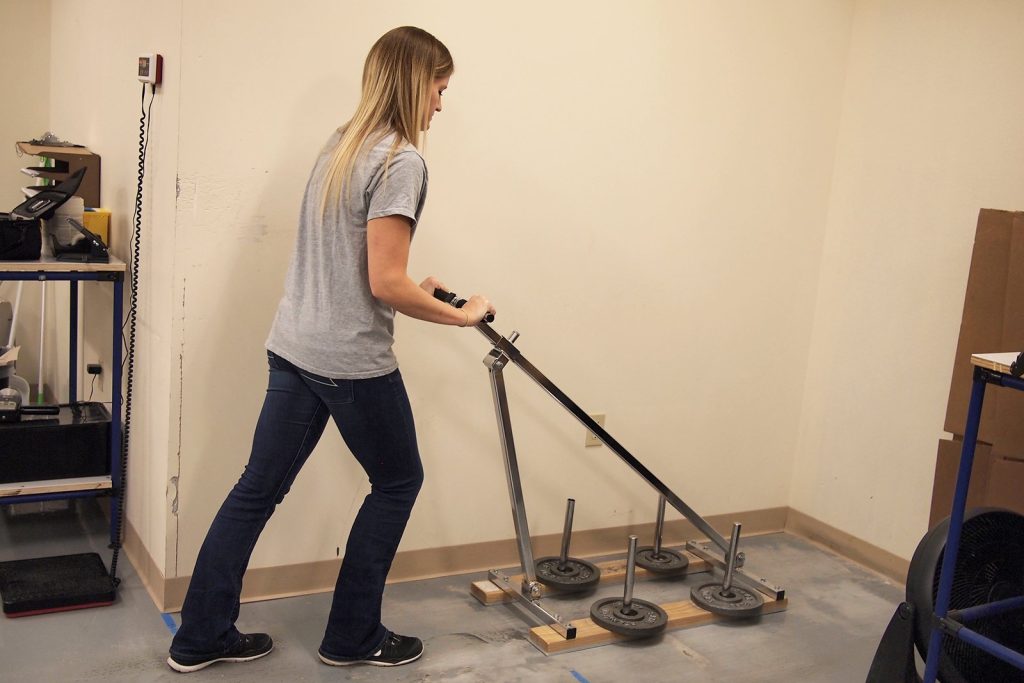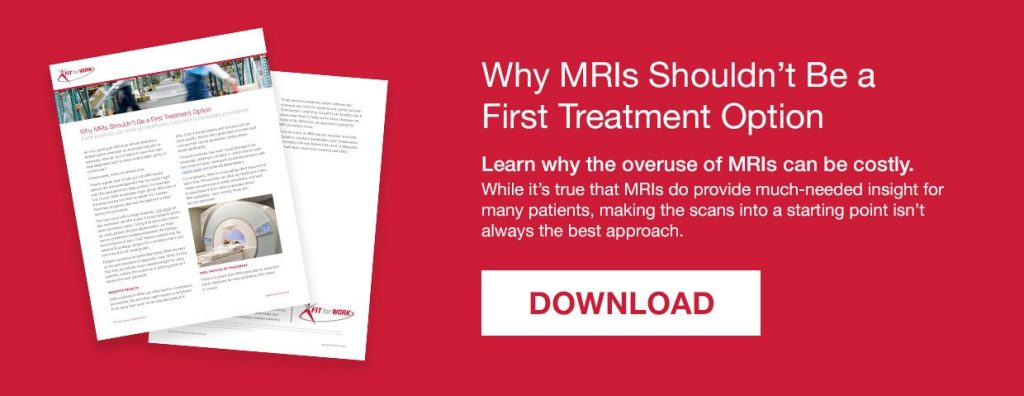By John Groves, DPT
Chief Executive Officer, Fit For Work
When it comes to avoiding hiring your next injury, ergonomics and functional employment testing are capable of working together to have a tremendous impact. While separate components of a comprehensive safety strategy, the two elements are highly complementary and are most effective when used in tandem to reduce injuries.
Here is a closer look at how ergonomics and post-offer employee testing (the most common form of functional employment testing) work side by side to achieve improved safety and success during the hiring process.
What is post-offer employee testing?
Post-offer testing is usually performed at a physical therapy clinic or onsite at the client’s location and assists with placing job candidates physically capable of performing the essential physical demands of the job. The two most common types of post-offer employee testing are:
- Physical Agility Testing
- Comprehensive
Physical Agility Testing can include some general medical measures, such as heart rate and blood pressure, as well as testing the candidate to see if they are able to perform the physical requirements of the essential functions of the job (based on the findings of a scientifically-rigorous physical demands analysis). This type of test can be administered by athletic trainers, occupational therapists, and physical therapists since these skills are outlined within their respective scopes of professional practice.
Comprehensive Testing includes all of the Physical Agility Testing components along with a review of the candidate’s medical history and a musculoskeletal exam. As the name implies, this is a very comprehensive test that can only be administered by occupational or physical therapists due to their respective scopes of practice.
Functional employment testing, such as post-offer testing, can play a leading role in preventing you from hiring your next injury. For example, say a candidate unknowingly came in with a hernia that was not revealed during the medical history review but that is detected by the OT or the PT during the musculoskeletal exam as part of the Comprehensive Test. As a result, the candidate is then sent to a physician to clear them before returning to complete the post-offer test. In this case, testing potentially prevented you from paying for this person’s hernia surgery.
How are employment tests created?
Physical demands analyses (PDAs), which provide the scientific rigor necessary to objectively quantify the physical demands of a given job, are used to create job-specific tests (JSTs) that serve as the basis for employment testing. JSTs help ensure candidates can perform the physical requirements of the essential functions of the job.
Is employment testing legal?
This is a common question, and yes, it is legal to test your job candidates. JSTs are legally defensible and are ADA- and EEOC-compliant. Physical ability testing is legal when designed, developed, and implemented in accordance with the Uniform Guidelines on Employee Selection Procedures .
Where does ergonomics come into play?
Ergonomic controls and improvements play a key role in employee testing because they reduce physical demands for employees, which in turn can expand the job candidate pool by increasing the percentage of the population that can safely perform in the position.
Without ergonomic improvements, only those fully capable of performing in a highly demanding role could be viewed as eligible candidates. Depending on the position, this could result in a very small pool of candidates and could make filling the position a much more challenging and time-consuming task.
For example, let’s say a lift-assist device had recently been implemented to lift an 80-pound item that had previously been lifted manually. After the improvement, the required physical demands of the role have been reduced to the next-heaviest item, which weighs only 40 pounds.
This change is massively significant because according to the Liberty Mutual Material Handling Tables , only 1% of females can safely lift an 80-pound item from floor to waist height. However, according to these same tables, 78% of females can safely lift a 40-pound item from floor to waist. Therefore, implementing this control increased the percentage of the female population that can physically perform in this role by 77%, greatly widening the candidate pool and increasing the likelihood of a successful hire.
Expand and improve your hiring pool with help from Fit For Work
Functional employment testing decreases employee turnover and associated costs and increases productivity and morale – all as a result of hiring capable employees well-suited to their tasks. ROI for properly implemented post-offer testing is anywhere from $3 to $20 for every $1 spent on testing. When paired with the science of ergonomics, testing expands the hiring pool to help you hire workers set up to succeed in their roles from day one.
Fit For Work is an industry leader in industrial ergonomics. With decades of experience and a passionate team of Certified Professional Ergonomists (CPEs), we are here to deliver a turnkey strategy uniquely tailored to your organization.
Contact us today to learn more about an ergonomics program designed to increase the safety, morale, and productivity of your employees.





